Tanzania sits on the equator and enjoys a pleasant climate year round. While there’s little fluctuation in monthly temperatures, the seasons do differ in the amount of precipitation received, which will affect your holiday, whether you are looking for a beach vacation in Zanzibar, a trek to the summit of the Kilimanjaro, or a safari in the national parks.
- The best time to visit Tanzania is during the long, dry season, from June to October, when most days are sunny and substantial rainfall is fairly unusual.
- Another popular time to visit Tanzania is during the short dry season from January to February when dry weather prevails although humidity is picking up.
- The worst time to visit Tanzania is during the main rainy season, or the ‘long rains’, which last from March to May. Daily heavy tropical downpours (mainly occurring in the afternoon) are the norm and can ruin a holiday.
- During November and December there’s another rainy season, the so-called ‘short rains’, but these are much lighter, less frequent and less reliable than the long rains.

The best time to visit Tanzania depends on your interests:
- The best time to witness the Great Migration in the Serengeti is probably February and March (start of the long rains) when the wildebeest and zebra congregate and calve on the vast treeless plains. Not only can you enjoy seeing baby animals, but the predators are at the highest number too. In June and July, the great migration hops over to Kenya’s Masai Mara and this is the time that you can witness spectacular Grumeti River crossings with crocodiles killing their prey (although it is hard to predict the exact time of this event).
- The best time for a beach holiday in Zanzibar is the long dry season (June to October), or the short dry season (January and February). During the short rains, it doesn’t rain every day, but days can be overcast and cloudy. Zanzibar is best avoided during the long rains.
- The best time to climb Kilimanjaro tends to be the warmest and driest months (July & August, and January & February). The primary issue is safety, as the risks associated with climbing increase significantly when the weather is foul. The effects of rain, mud, snow, ice and cold can be very strenuous on the body.
If you want to combine a safari, mountain trek, and beach holiday in one itinerary, I recommend to travel in July or February.


Recent Comments